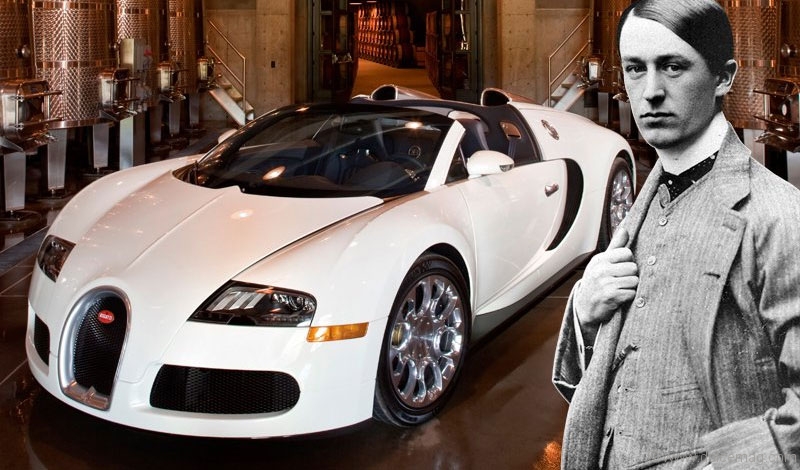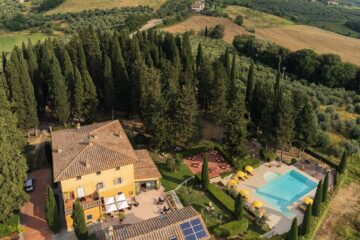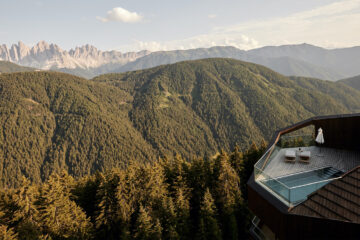The History of Bugatti
Past and present, Bugatti continues its history of building high-speed automobiles while pushing the engineering envelope.
Bugatti is a company with a storied history of building some of the most exclusive cars the automotive world has ever seen. Its founder, Ettore Bugatti, started out by designing lightweight sports cars in the early 1900s. Born in Milan, Italy, Ettore Bugatti came from a family of artists and found his passion to be automobiles. This led him to pursue an engineering apprenticeship, which resulted in some of the finest racing cars of its time.
Shortly after building and successfully racing his cars, Bugatti set up a factory in the town of Molsheim, France in 1909. From here, Bugatti developed race cars that enjoyed tremendous success, winning various European road races and grand prix events in the 1920s and ’30s. The sleek race cars wore a distinctive sky-blue paint job and were further identified by the signature horseshoe-shaped front radiator shell that is still a feature of today’s designs. The 24 Hours of Le Mans Grand Prix resulted in two victories, one in 1937 and the next in 1939 at the hand of Pierre Veyron, whose name now adorns the current model. During this period, Bugatti also produced some of the most exclusive luxury cars the world has known. Some of the outstanding models were the Types 35, 51, 57 and 59, which, despite being based on racing models, were produced as street versions in the forms of coupes, convertibles and sedans. Bugatti’s designs stood out with artistic flowing lines that suggested speed; indeed, some of his cars were capable of top speeds well in excess of 160 kilometres per hour! Their advanced mechanical precision and styling stood out among all other automobiles of the time. One of the best known models is the ultra-rare and luxurious Bugatti Royale, which came with a 12.7-litre engine.
The advent of the two World Wars brought a temporary halt to Bugatti’s auto production. During World War I, Bugatti developed and produced aircraft engines for both the American and French governments. One of these was the infamous ‘straight-eight’ engine, originally designed to power an aircraft but later adapted for the Bugatti road cars. Another new innovation was in the material and look of wheel design. At a time when wheel design was based on common wire spokes, Bugatti came up with a highly advanced spoked aluminum wheel in the 1920s that looks contemporary even by today’s standards.
During the two World Wars, Ettore Bugatti’s automobile business flourished and with it came an extravagant lifestyle on his Molsheim estate that housed museums, stables and even a private distillery.
In the fallout of World War II, the company’s fortunes began to decline and a few short years after the war, Ettore Bugatti passed away, leaving a legacy of cars unique in their engineering and design that have become sought-after collectibles.
Fast forward to 1987, when Italian businessman Romano Artioli acquired the famous Bugatti name and established Bugatti Automobili SpA. A new factory was built in Campogalliano, Italy to produce the striking Bugatti EB110GT supercar. With a mid-engine quad turbo V-12 motor and all-wheel-drive, the high-tech EB110GT promised unsurpassed high-speed performance. Two Bugatti-specific styling cues from the past that made the transition to the EB110 were the horseshoe-shaped radiator shell on the front facia and aluminum wheels that bore a similar resemblance to those on the Royale. By the mid-1990s, the company had closed due to financial difficulties.
Today Bugatti is owned by the Volkswagen Group, which founded Bugatti Automobiles SAS in 2000. Their first creation was the stunning, hyper-exotic Bugatti Veyron 16.4 supercar, which put out almost 1,000 horsepower. This is the result of the 16-cylinder engine with four turbo chargers that can power the Veyron to a top-speed of 407 km/h, faster than the take-off speed of a commercial jetliner!
The latest iteration of the Bugatti Veyron is the Grand Sport convertible. Significant structural engineering using lightweight carbon fibre was undertaken to retain body rigidity for the extreme high speed the car is able to achieve. Active aerodynamics include a movable rear wing designed to keep the Grand Sport stable at high speeds.
Some of the exterior enhancements to the Grand Sport include distinctive new LED headlamps and forged aluminum wheel design. Two roof-tops are offered, a transparent hardtop roof offering more rigidity and a temporary foldable umbrella type that can be stored in the luggage area. As expected, the interior is wrapped in the finest leather with quilting on the seats.
With the exotic performance and engineering, it looks like Bugatti has succeeded in producing the ultimate open-top sports car.
Manufacturing process: Veyron 16.4
With much publicity regarding the spectacular technical achievements and performance of the Grand Sport, the other crucial component of the Bugatti experience includes its state-of-the-art production facility. Located in Molsheim, France, the modern, highly functional building designed by internationally renowned architect Gunter Henn employs an elliptical layout that reflects the company logo. The elliptical shape was favoured by Ettore Bugatti as a design cue in the styling of his legendary motor cars. Just like Etorre Bugatti’s engineering mandate of using lightweight materials such as aluminum, the building also employs an aluminum shell that lends a feel of lightness to its structure. Inside, the production facility is known as the Atelier Studio, where the Bugatti Veyron and Grand Sport are created.
One or two Bugatti Veyrons are produced each week at the Chateau St. Jean production facility. Whereas conventional automobile plants run at high speeds, spitting out thousands of cars each day, Bugatti’s production follows a much slower pace, reflecting the special made-to-order cars. Each Bugatti Veyron is specially hand-assembled by eight carefully selected individuals who are highly trained to put together all the main components that make up each car. Each car will take up to three weeks of assembly due to the careful production procedures put in place to ensure the highest quality and inspection. There is no assembly line to speak of, only specially designed workstations where the Veyron and Grand Sports start to take shape. Unlike a typical auto assembly plant, crammed full of equipment, the Bugatti’s spacious production facility is extremely neat and modern. The bright atmosphere comes from the natural lighting that emanates from the full-length floor-to-ceiling windows and bright epoxy coated floors.
Producing the Veyron and Grand Sport at the original birthplace of Bugatti has brought the history of the company full circle.
Engine: 1,001-HP, quad-turbocharged, 8-litre W-16, 64 valves
Transmission: 7-speed Dual Clutch automated manual
Drivetrain: Mid engine/all-wheel-drive
Suspension: Double wishbone front/rear
Brakes: Cross-drilled, radially vented carbon fibre composite discs brakes with Stability Control System
Fuel tank capacity: 100 litres
Acceleration: 0 – 100 km/h under 2.7 seconds
Top Speed: 407 km/h
Starting Price: $2,200,000 (CDN)






















































































1 Comment
Being a california resident , my tastes of vintage Buggatti is widespread in collectors garages but this test run of the Veryon makes my jaw dropp./..